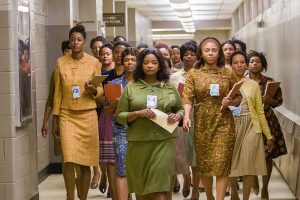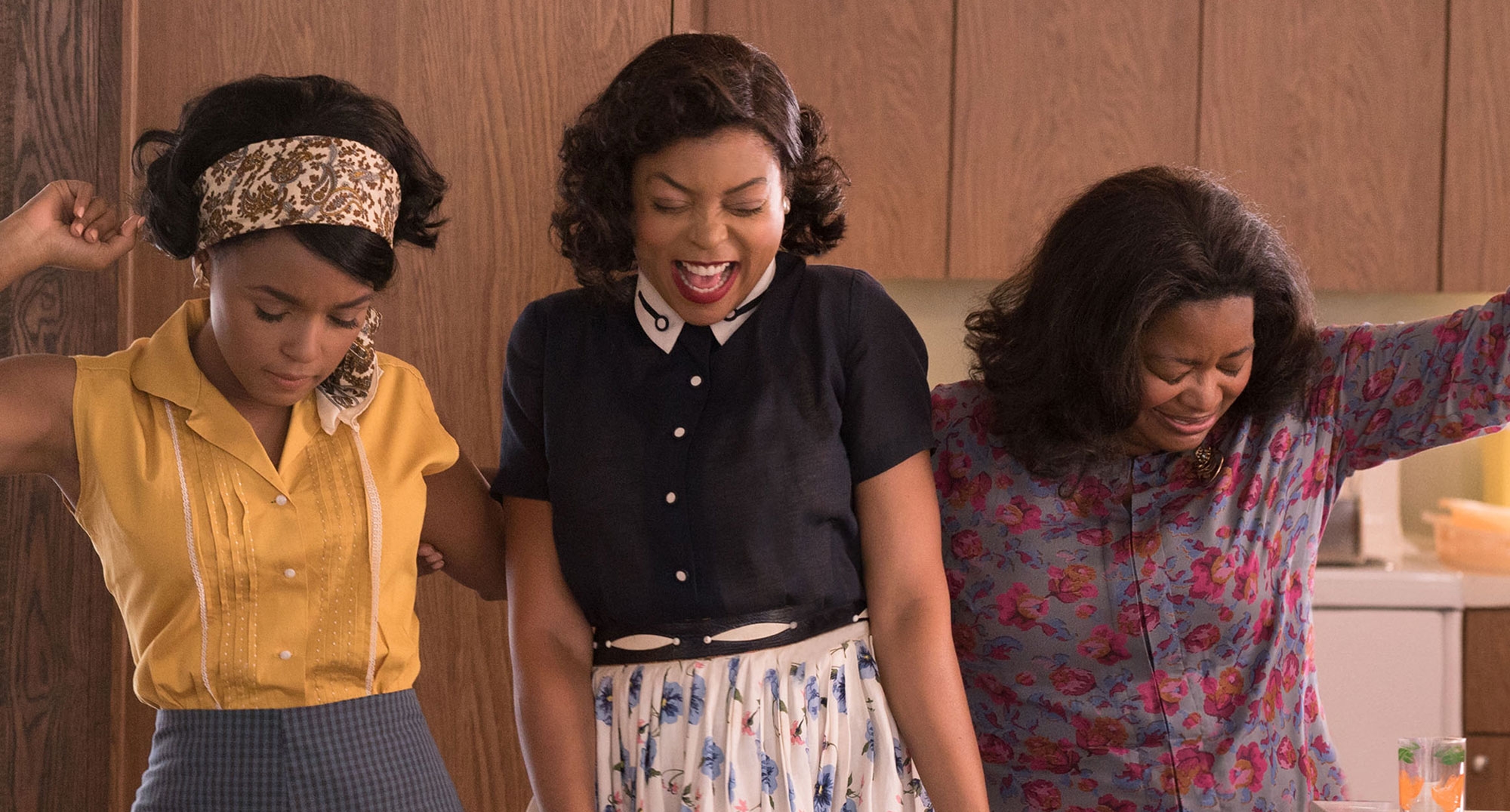By Shuchi Goyal
When Katherine Johnson, one of the three leads of “Hidden Figures,” joins NASA’s Space Task Group as a human computer in 1962, she is the lone black woman in a room of white men. She receives a terse welcome and is told that the standard workplace attire for females includes a knee-length skirt, a blouse, and a simple strand of pearls.
The strand of pearls is an appropriate metaphor for “Hidden Figures” when you compare it to fellow Best Picture nominees at this year’s Academy Awards. The Academy often favors the dramatic (“Moonlight,” “Manchester by the Sea”) or the flamboyant (“La La Land”) – statement necklaces, if you will, that are hard to miss. “Hidden Figures” takes fewer risks in its storytelling. In this case, sticking to tradition pays off though, because “Hidden Figures” manages to be not only elegant and effective, but also highly entertaining.
“Hidden Figures” tells the true story of Katherine Johnson (Taraji P. Henson), along with Dorothy Vaughan (Octavia Spencer) and Mary Jackson (Janelle Monaé), three black women who combat institutional racism and sexism to play their part in the Space Race. All three actresses handle their roles deftly, and Henson in particular has received praise for her portrayal of the nerdy but confident Johnson. Equally brilliant, however, is Monáe, who lifts the film with her spot-on comedic timing and confidence on-screen. The leads are complemented by the supporting cast, which includes Mahershala Ali, Kevin Costner, Kirsten Dunst, and Jim Parsons, whose subtle performances are driven by body language more than by dialogue.
Despite positive critical reception and several award nominations, it was still a surprise to many when “Hidden Figures” won the Outstanding Cast Performance prize at the Screen Actors Guild Awards earlier this month. “Moonlight” and “La La Land” continue to be heavily favored at the Academy Awards. The flaw in “Hidden Figures,” according to at least one reviewer, is its predictability. The film has also been criticized for being too overt with its message and lacking nuance, with its heavily inspirational tone and its light-hearted screenplay.

It is true that the plot follows a common Hollywood formula in which the main characters, knowing that society has stacked the deck against them, persevere and push boundaries. But “Hidden Figures” distinguishes itself with the deeper look it takes into the characters’ obstacles. Director Theodore Melfi does not isolate the main characters’ femininity from their blackness. If there is any doubt that either women or people of color can succeed in STEM fields, that doubt exists two-fold for those living at the intersection of those identities. Rather than producing a niche or single-minded film, Melfi conveys many messages throughout “Hidden Figures.”
For example, Melfi confronts the reality of racism and its innateness in society, even among people who should know better. While the movie contains few actual villains (unless you count the faceless threat of the Soviet Union), the white workers at NASA are portrayed as intelligent but aloof, too comfortable in their status to question the current system of privilege. Melfi also acknowledges that the responsibility of bringing people eye-to-eye with their own prejudices often frustratingly falls on the shoulders of the people of lower status.
Despite its serious undertones, which are even more significant given the recent resurgence of civil rights activism, “Hidden Figures” is a bright movie that keeps viewers happy the whole way through. The film is aesthetically pleasing, with bright colors that seem like they are out of a storybook and an upbeat soundtrack inspired by funk and hip-hop. The male uniforms at NASA in the 1960s were primarily black and white, and the few white female characters stick to wearing solid black dresses. Appropriately, then, the color in the film comes from the wardrobe of its cast of color, and it suits their upbeat and likable personalities.
For all the things “Hidden Figures” does well, it still is not expected to win big at the Academy Awards on Sunday. Reviewers have commented that the film has “few subtleties” or is lacking in nuance or experimentation. But if film awards so frequently favor “white” movies, as alleged by the “#OscarsSoWhite” protests over the last several years, making a film about women of color and hoping it will be a critical and commercial success already seems like a huge risk. It’s likely that the Academy will overlook this simple string of pearls amid the more dramatic films in its category. But “Hidden Figures” is still a small step forward in Hollywood’s journey to recognize people who are often left invisible.


